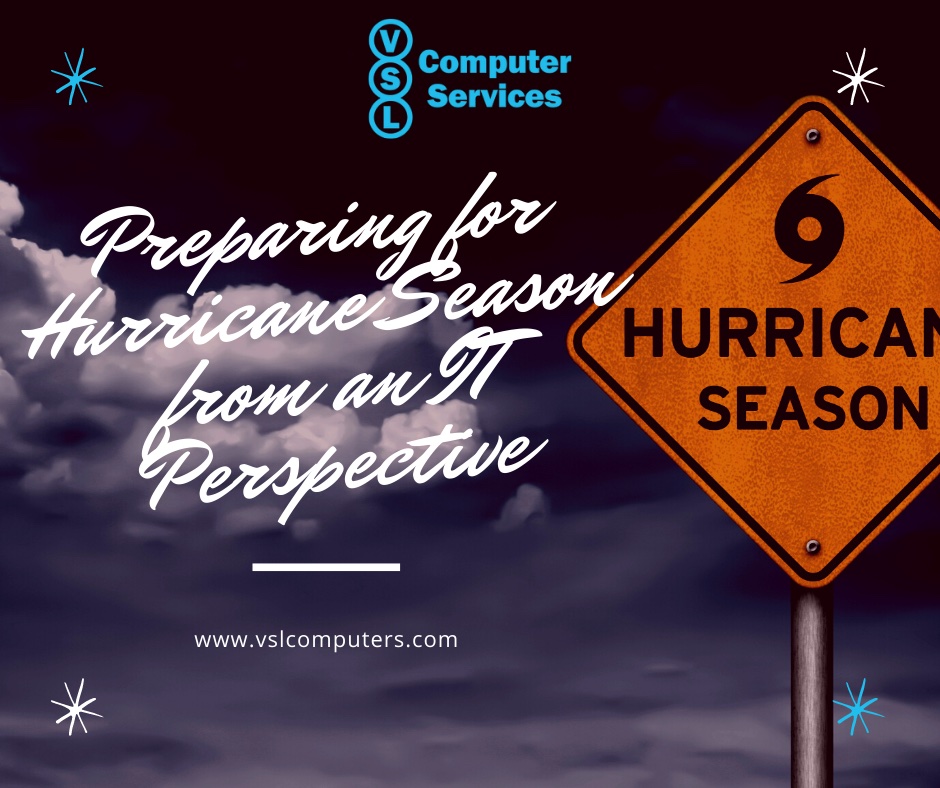Preparing for Hurricane Season from an IT Perspective

Hurricane Elsa just made landfall in Florida, signaling the beginning of hurricane season 2021. You and your organization must be prepared for when a hurricane (or storm) hits. A big storm disrupts business as usual and returning to normal operation may take some time. Imagine how much longer getting back to normal will take when you loose data due to device failure, your systems being down, and hardware was killed due to water damage or a power surge.
We’re going to cover various steps you can take to help protect your electronic devices and systems during a storm.
Schedule your devices and data to backup regularly
This is first and foremost so that in the event of a disaster, your data and devices may quickly be back up and running as usual. You and your organization should already be running backups regularly. Use the start of hurricane season as a reminder to check your backups and make sure they are being done properly on schedule.
Bonus: We’ve been discussing ransomware lately. Having recent backups are one of the best means to counter a ransomware attack should you ever fall victim to one (learn more about cloud backup services here).
Battery life
We all have many mobile devices, such as cell phones, tablets, laptops, and more. These devices run on battery which is great for when the power is out as you may still use them. When the power stays out for a prolonged time however, it can be hard to conserve battery life. You may help conserve your battery by closing all the programs and apps you are not currently using. Also, be sure to charge any and all external battery packs you have, and that you have the correct cords for each of your devices should you need to charge while the power is out.
Protect your electronic devices
Electronic devices and water do not mix. Have you ever jumped into a pool or walked into the ocean just to realize your cell phone is still in your pocket? That scenario typically doesn’t end well.
When preparing for a storm, move all electronics away from windows and put them in an inside, safe room if possible. Keep them up high and off the ground to protect from flooding. Before the storm, shut off all devices and power down all computers. Unplug anything that is plugged in.
Bonus: go the extra mile and put electronic devices in dry bags. Dry bags will provide temporary protection from rain and water in the event of roof damage and broken windows.
Update your voicemail and set your email auto-reply
This one is easy to forget. Hopefully you can get right back to the office after a storm, but there is a chance that you will not be able to. Be proactive and set up your email auto-reply and update your voicemail message, letting colleagues, partners, and customers know an alternative way to contact you if needed.
Scan Important paperwork
If some of your data has yet to be digitized, be sure to scan them into digital format using scanner. This will help to prevent data loss should anything happen to the paper copy.
What else do you do
We covered a few ways to protect your technology and data in the event of a hurricane, storm, or natural disaster. What else do you do to prepare your technology for a hurricane?
